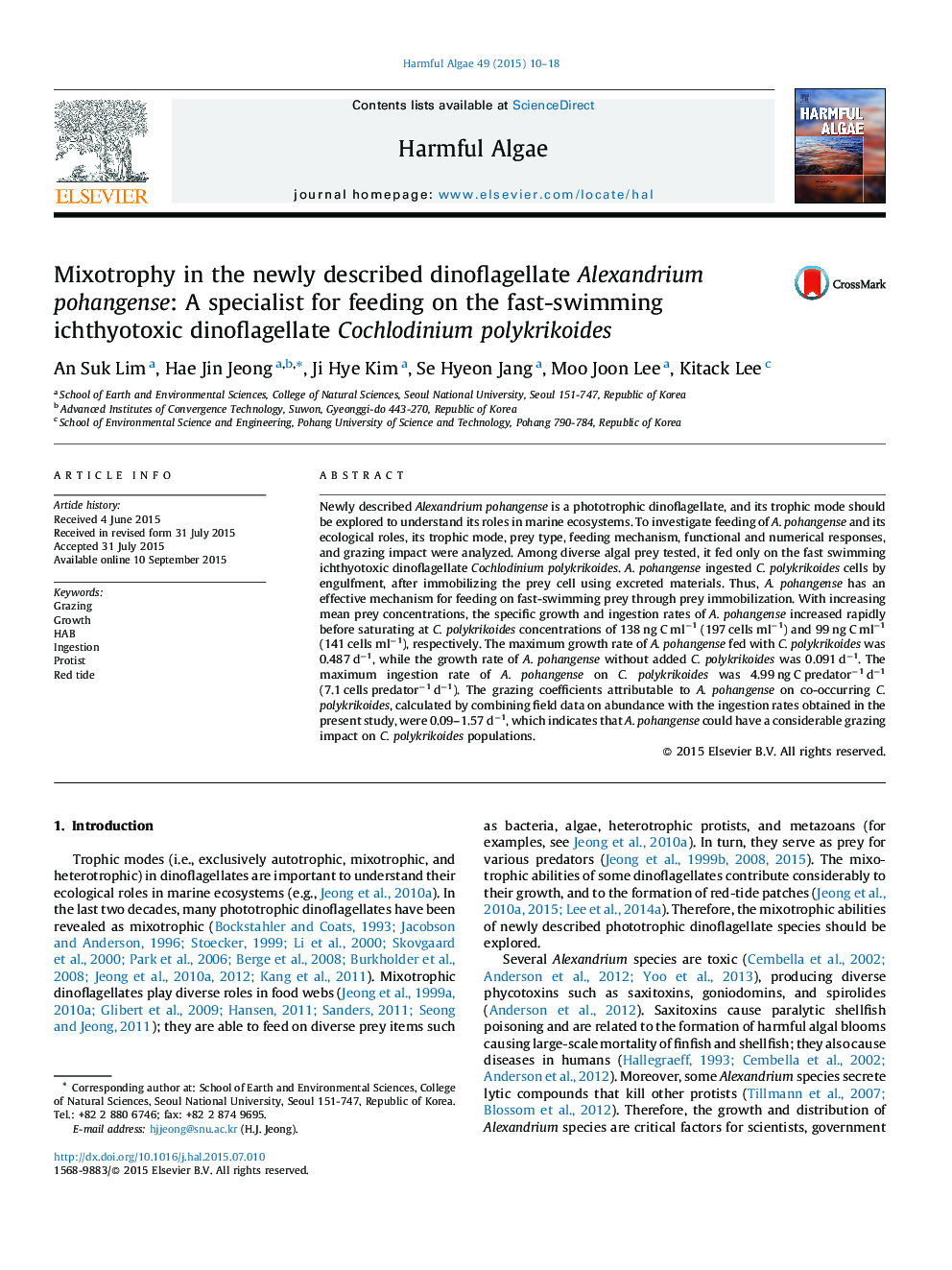| Article ID | Journal | Published Year | Pages | File Type |
|---|---|---|---|---|
| 4545214 | Harmful Algae | 2015 | 9 Pages |
Newly described Alexandrium pohangense is a phototrophic dinoflagellate, and its trophic mode should be explored to understand its roles in marine ecosystems. To investigate feeding of A. pohangense and its ecological roles, its trophic mode, prey type, feeding mechanism, functional and numerical responses, and grazing impact were analyzed. Among diverse algal prey tested, it fed only on the fast swimming ichthyotoxic dinoflagellate Cochlodinium polykrikoides. A. pohangense ingested C. polykrikoides cells by engulfment, after immobilizing the prey cell using excreted materials. Thus, A. pohangense has an effective mechanism for feeding on fast-swimming prey through prey immobilization. With increasing mean prey concentrations, the specific growth and ingestion rates of A. pohangense increased rapidly before saturating at C. polykrikoides concentrations of 138 ng C ml−1 (197 cells ml−1) and 99 ng C ml−1 (141 cells ml−1), respectively. The maximum growth rate of A. pohangense fed with C. polykrikoides was 0.487 d−1, while the growth rate of A. pohangense without added C. polykrikoides was 0.091 d−1. The maximum ingestion rate of A. pohangense on C. polykrikoides was 4.99 ng C predator−1 d−1 (7.1 cells predator−1 d−1). The grazing coefficients attributable to A. pohangense on co-occurring C. polykrikoides, calculated by combining field data on abundance with the ingestion rates obtained in the present study, were 0.09–1.57 d−1, which indicates that A. pohangense could have a considerable grazing impact on C. polykrikoides populations.
